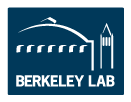Advanced Solution Processable Photovoltaics Research
Solar is the most abundant renewable energy source. One hour of solar energy on earth is equivalent to the world annual energy consumption. The relatively high cost of solar energy conversion compared to that of fossil sources is still a major hurdle preventing the widespread adoption of PV technologies. Therefore, cost reduction is key. To reduce the cost of solar energy conversion, our work includes the development of polymer and solution process small molecule solar cells and the development of solution process inorganic solar cells.
Polymer and solution process small molecule solar cells – In the last decade, polymer solar cells based on conjugated polymer and fullerene bulk heterojunction structures have achieved significant progress. Our group’s PSC research spans from: (a) understanding and controlling of nanoscale BHJ morphology via Atomic Force microscopy (AFM), TEM, and Grazing incidence X-ray diffraction (GIXRD) techniques; (b) study of the charge generation, recombination, carrier transport in BHJ active layer via various spectroscopy techniques; (c) understanding and controlling of semiconductor/electrode interface to enhance charge extraction; (d) developing novel device structures such as inverted solar cells and tandem structures for long-term stable and high efficiency organic solar cells; and (e) developing novel organic semiconductor materials (both donor and acceptor) with tunable energy bandgap and energy levels and high carrier mobility for high performance. The group has been at the forefront of the field and achieved over 10% power conversion efficiency in both polymer and solution process small molecule OPV.

Solution process inorganic solar cells – Our inorganic solar cell research focuses on solution processed copper indium gallium sulfide/selenide (CIGS) and earth abundant copper zinc tin sulfide/selenide (CZTS) solar cells. Our research focuses on developing ink formation, optimizing device fabrication, and understanding the device physics. Both nanoparticle-based, and molecular solution-based CIGS/CZTS inks are under investigation, and over 11% power conversion efficiency has been achieved. In addition, a full solution process by using Ag nanowires and ITO nanoparticles as the top contact has been successfully demonstrated in both CIGS and CZTS systems.








